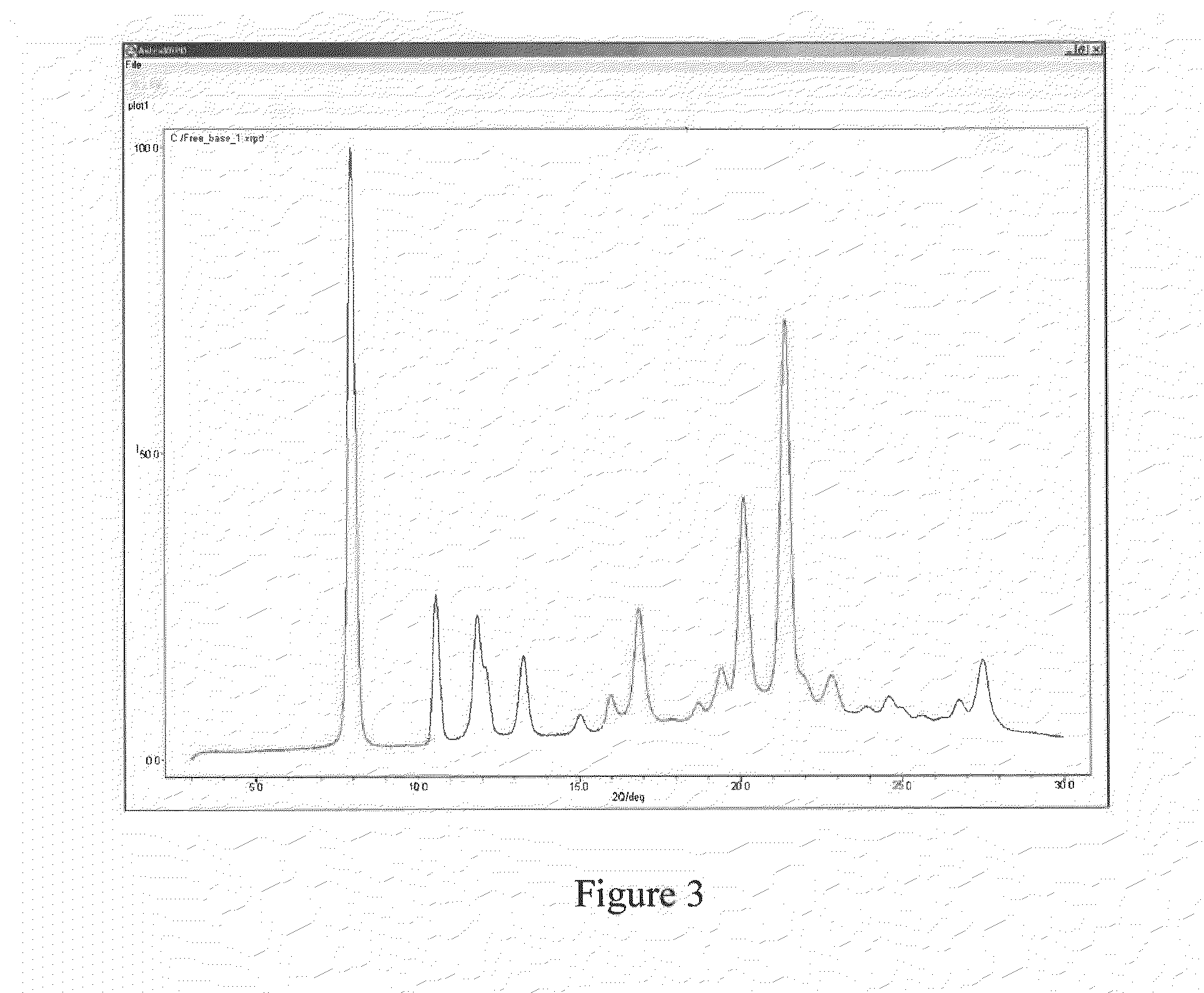Pharmaceutical Compounds
a technology of pharmaceutical compounds and compounds, applied in the field of pharmaceutical compounds, can solve the problems of poor patient prognosis, cell cycle arrest and/or cell apoptosis, and cyclin e in solid tumours, and patients either do not attain complete remission or fail to achieve the effect of remission
- Summary
- Abstract
- Description
- Claims
- Application Information
AI Technical Summary
Benefits of technology
Problems solved by technology
Method used
Image
Examples
example 1
Synthesis of 5-cyano-2-methoxy-N-[3-(5-morpholin-4-ylmethyl-1H-benzoimidazol-2-yl)-1H-pyrazol-4-yl]-benzamide
1A. Synthesis of (3,4-Dinitro-phenyl)-morpholin-4-yl-methanone
[1245]
[1246]A mixture of 3,4-dinitrobenzoic acid (10.0 g) and thionyl chloride (30 ml) was heated at reflux for 2 hours, cooled to ambient temperature and excess thionyl chloride removed through azeotrope with toluene. The residue was taken up in THF (100 ml) and morpholine (4.1 ml) and Et3N (7.2 ml) added concurrently to the mixture at 0° C. The mixture was stirred for 3 hours, water (100 ml) added and then extracted with EtOAc. The organic portion was washed with brine, dried (MgSO4) and reduced in vacuo. Recrystallisation of the residue from MeOH gave (3,4-dinitro-phenyl)-morpholin-4-yl-methanone (8.23 g) as a yellow solid. (1H NMR (300 MHz, DMSO-d6) δ 8.3 (d, 1H), 8.3 (s, 1H), 8.0 (d, 1H), 3.7-3.5 (m, 8H)).
1B. Synthesis of (3,4-Diamino-phenyl-morpholin-4-yl-methanone
[1247]
[1248]A mixture of (3,4-dinitro-phenyl)...
example 2
Synthesis of 6-methyl-imadazol[2.1-b]thiazole-5-carboxylic acid [3-(5-morpholin-4-ylmethyl-1H-benzoimidazol-2-yl)-1H-pyrazol-4-yl]-amide
[1260]
[1261]A mixture of 6-methyl-imidazo[2.1-b]thiazole-5-carboxylic acid (Bionet) (61 mg, 0.33 mmol), 3-(5-morpholin-4-ylmethyl-1H-benzimidazol-2-yl)-1H-pyrazol-4-ylamine (100 mg, 0.33 mmol), EDC (77 mg 0.39 mmol) and HOAt (54 mg, 0.39 mmol) was stirred in DMF (3 ml) at 80° C. for 1 h then at ambient temperature for 20 h. The mixture was reduced in vacuo and the residue was partitioned between EtOAc and saturated NaHCO. The organic portion was washed with brine, dried (MgSO4) and reduced in vacuo. The residue was purified by preparative LC / MS to give 6-methyl-imidazo[2.1-b]thiazole-5-carboxylic acid [3-(5-morpholin-4-ylmethyl-1H-benzoimidazol-2-yl)-1H-pyrazol-4-yl]-amide (29 mg). (LC / MS Basic: Rt 2.56 [M+H]+ 463).
example 3
Synthesis of 2-cyano-N-[3-(5-morpholin-4-ylmethyl-1H-benzoimidaxol-2-yl)-1H-pyrazol-4-yl]-acetamide
[1262]
[1263]A mixture of cyano-acetic acid (23 mg, 0.28 mmol), 3-(5-morpholin-4-ylmethyl-1H-benzimidazol-2-yl)-1H-pyrazol-4-ylamine (70%, 100 mg, 0.23 mmol), TBTU (89 mg, 0.28 mmol) and DMF (2 ml) was stirred at 25° C. overnight. The mixture was then evaporated in vacuo. Flash chromatography, eluting with DCM-6% MeOH / DCM afforded 2-cyano-N-[3-(5-morpholin-4-ylmethyl-1H-benzoimidazol-2-yl)-1H-pyrazol-4-yl]-acetamide as a yellow solid (65 mg, 77%). (LC / MS (acidic method / final compound): Rt 4.61, [M+H]+ 366).
PUM
| Property | Measurement | Unit |
|---|---|---|
| Temperature | aaaaa | aaaaa |
| Temperature | aaaaa | aaaaa |
| Temperature | aaaaa | aaaaa |
Abstract
Description
Claims
Application Information
 Login to View More
Login to View More - R&D
- Intellectual Property
- Life Sciences
- Materials
- Tech Scout
- Unparalleled Data Quality
- Higher Quality Content
- 60% Fewer Hallucinations
Browse by: Latest US Patents, China's latest patents, Technical Efficacy Thesaurus, Application Domain, Technology Topic, Popular Technical Reports.
© 2025 PatSnap. All rights reserved.Legal|Privacy policy|Modern Slavery Act Transparency Statement|Sitemap|About US| Contact US: help@patsnap.com



